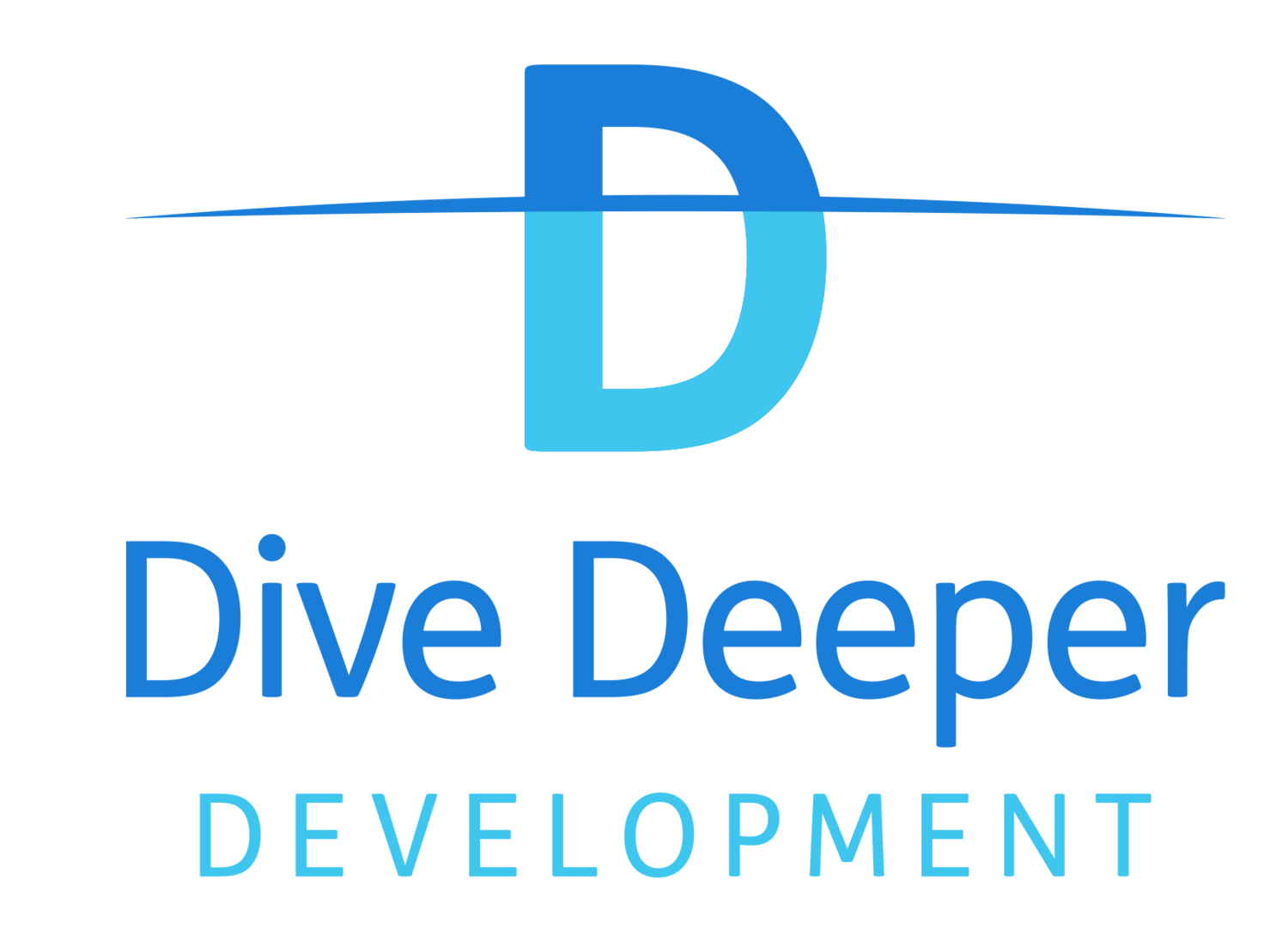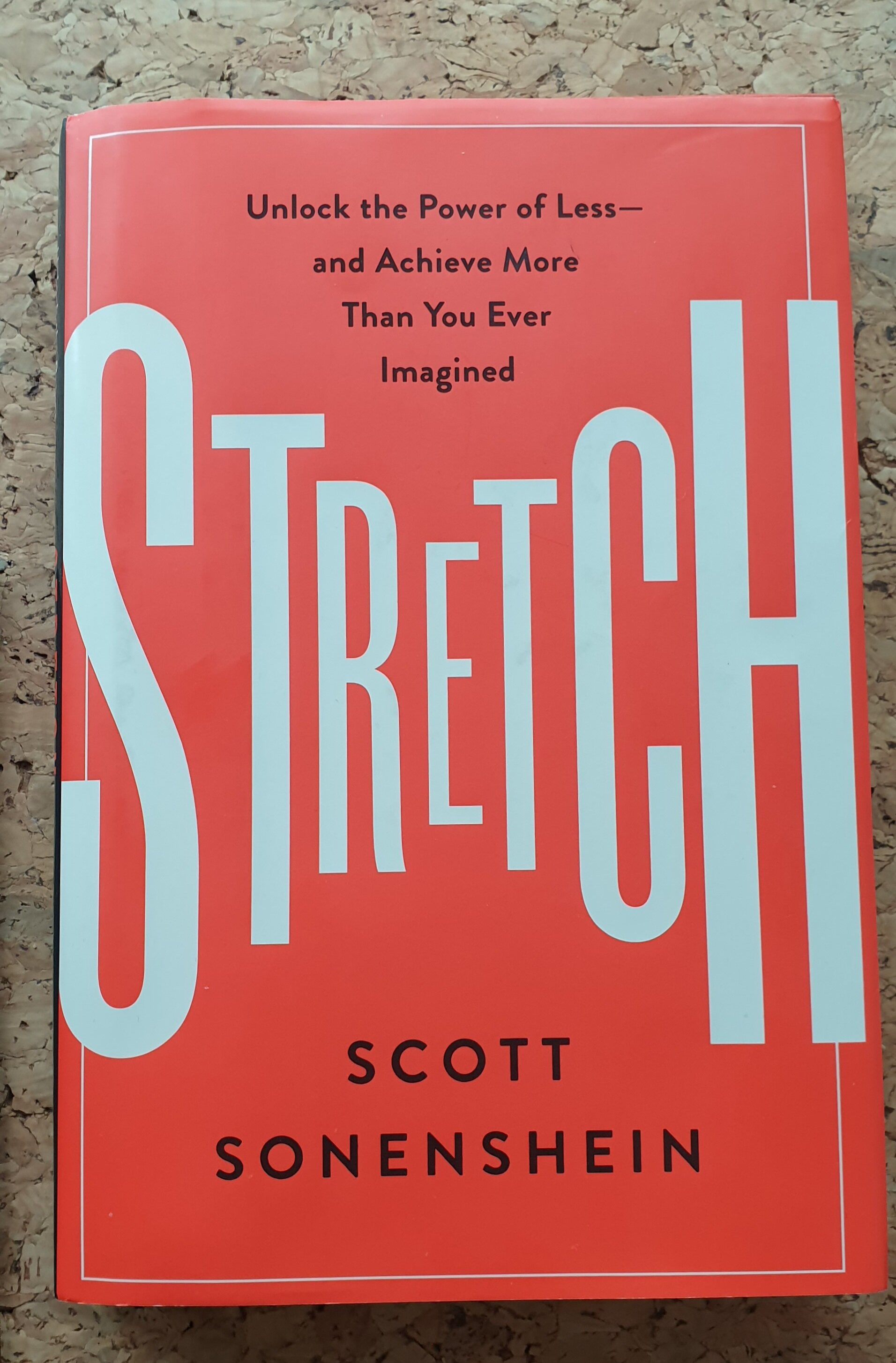Business Book Club: Stretch
I've set myself a goal to read one self-development book per month. To make sure I truly reflect on what I'm reading I'm going to extract the wisdom from the best business and personal development books and share it with you.
This time, I've been reading Stretch by Scott Sonenshein.
The Book
This book aims to dispel the myth that more resources mean better results. Sonenshein suggests that we grossly overestimate the importance of acquiring more resources and we grossly underestimate our ability to make more of what we have. He describes the ‘chasing mindset’ that many of us have as being like a treadmill; the more resources we acquire, the faster the pace our mind sets the treadmill to. Therefore, we run faster to keep up although, of course, we don’t get any further. This idea resonated with me because, like many people, I had a lot of time to think over lockdown. I started to believe that I needed to do more activity or have more resources but then I also had this inkling that maybe it's not about doing more after all. Needless to say, I was interested to read the book and see if less really is more.
The Chasing Mentality
The book starts by describing the problem of a ‘chasing mentality’. This is the mentality of always looking for more. Sonenshein suggests that there are four reasons why we do this.
Social Comparison
As human beings, we are social creatures. We have a natural tendency to compare ourselves to others to get an idea of where we stand. The problem is that we often compare upwards, meaning we compare with people have more than us. We tend to seek what they have, even if their circumstances or goals are different to ours.
Functional Fixedness
We tend to have a fixed idea of what resources can be used for. Sonenshein gives the example of children being set a problem whereby they had to help a teddy bear reach something on a shelf using a series of toys. When the toys are laid out in front of the children, older children tend to fare quite well. In a second experiment, the children were given the toys but they were stored inside one of the other toys: a box. This time the older children struggled as they saw the box only as a container. In that condition, the younger children did better as they had a less fixed idea about what the box could be used for.
Mindless Accumulation
Sonenshein describes a study where people were able to click on a computer programme in exchange for chocolates. More clicks meant more chocolates but the trade off was that they would have to hear a jarring, sawing sound instead of pleasant music. In this experiment, people clicked on the software multiple times to gain lots of chocolate, even though they were told they couldn't take the chocolate out of the room with them. Of course, there was only so much chocolate they could eat before leaving. Despite this, participants had a tendency to acquire a lot more chocolate than they could eat. The experiment was run a second time, but this time with the potential number of chocolates being capped. The testers found that the people who had the amount of chocolate they could acquire capped enjoyed the experiment a lot more than those who could acquire as much as they like.
Resource squandering:
The idea that the more you have, the more wasteful you become. Here, we learn of two departments given some money to invest as they saw fit. Interestingly, the department that had more resources used them less effectively than the department who had fewer resources. Sonenshein explains that more resources can be useful to a point, they give the freedom to experiment, but there does come a critical point at which having more resources makes you more wasteful and less effective.
“ “Stretchers find beauty and richness in places where others struggle to see anything of value. Too often, we understand, interact with, and use things at face value, locking ourselves into conventions that limit possibilities.” Our creativity is sparked by constraints. ”
Stretch Mindset
So what is the answer to having a chasing mindset? Of course, it's having a stretching mindset. The book is full of examples of people who have displayed this stretching mentality and it seems they have a few things in common.
A preference for action over planning
The problem with planning is that when we put a lot of time and effort into creating a plan, we become wedded to it. This means we miss opportunities that weren’t accounted for in our original plan and potentially fail to stretch our resources as a result. It also means we waste time and resources planning for a future that may never happen. Good stretchers act and learn as they go. It allows them to adapt to their environment and to respond to what's in front of them using whatever they have.
Constraints
Sonenshein gives the example of Robert Rodriguez (director of Hollywood hit Desperado) who made his first film on just $3000. Throughout filming, he used whatever he had to hand and even changed the storyline at times to fit the resources that he had. It was the result of this unique approach that kickstarted his Hollywood career.
This section of the book introduces an idea I found really interesting and that is that resources are created. So for example, if you take a rock, it has an innate quality in that it's heavy. However, it's not until you use the rock that its value is really known. If you throw it, it could be a weapon, if you put it on paper, it becomes a paperweight, if you paint it, it becomes a canvas. Constraints make us more resourceful and see things for the potential that they have.
Frugality
Not being too frugal of course but being very careful with resources. When we adopt a frugal mindset, we are more likely to reuse things or recycle them. It also incentivises us to think long term and be less wasteful with our resources. Sonenshein also points out that resources can be a distraction. Frugality, on the other hand, causes us to be focused only on finding what we need to get the job done.
How to stretch
So what can we do to make better use of our resources? Here are just a few of the suggestions Sonenshein makes in a book.
Just say no
If you are offered more resources, more money, or perhaps even a promotion, consider saying no. Don't always chase new and shiny things. Challenge yourself and ask, “Can I get what I want with what I already have?”. I love this idea of thinking about what you really want and asking yourself what resources you need to get there rather than just mindlessly chasing more. Often we don’t need as much to achieve our goals as we think.
Go exploring
Instead of operating on autopilot and doing what you have always done, vary your routine each week. Do something different, take a different route to work, hold your meeting in a different venue, invite different people to the meeting and mix it up. Mixing up our routine can make us more creative and look at our resources with fresh eyes.
New neighbours
If a chase mentality is caused by comparing upwards, why not compare yourself to people who are really good stretchers or people who have what you want rather than comparing upwards. They might have more but they may not be a good comparison for achieving the things we want.
Appreciate what you have
Think about your resources and try to really appreciate them. Sonenshein suggests that you ‘shop your closet’. Take stock of what you have, remind yourself of it and express your gratitude for it. Perhaps even write down what you are grateful for.
Planning backwards
Most people plan forwards. They make a detailed plan and then they execute. Sonenshein suggests that we should spend a day just acting first and at the end of the day, journal what we did and reflect on it to see if there is a better way of using our resources. He makes the comparison between a symphony, which is written and followed, to a jazz band that just riff off each other as they go. Is there something to be learnt from being more like a Jazz musician?
Break it up
I've used this idea before as a creativity exercise but I’ve never applied it to resources. Here is how it works: Take a resource that you have and ask yourself if it can be broken into smaller parts. If it can, ask yourself if the smaller parts imply a new or different use? Could you use this resource for something else?
Many resources have more than one use but we often fail to see this. I started to think about ‘break it up’ with regards to my business as well as my resources. Could I break down some of my services or use parts of them for other purposes (as other products or just for marketing maybe)? I don’t know but it challenged me to think about what I already have differently.
So what did I think of the book?
I thought Stretch was a really interesting read as it covered a topic that resonated with me. During lockdown, it was very tempting to buy and do more. However, I am now firmly sold on the idea of rummaging through what I have and revisiting, repurposing, reusing and upcycling. In the book, there are many examples of both the chasing mentality and the stretching mentality and at times it is a bit repetitive and labour's the point with too many examples. That said, it was an interesting and easy read. It is also very straightforward to follow and you’ll find it has lots of very clear, actionable ideas. In fact, there is a Stretch workshop at the end of the book and you'd be hard-pressed not to walk away from it with some fresh ideas about how to stretch your resources.
I would definitely recommend the book. It may help you view what you already have with a fresh pair of eyes and in these uncertain times, who knows what the future holds. Resources may be more scarce. The good news is we don't necessarily need more of them.
What should I read next?
Have you read Stretch? What did you get from it? What should I read next?
If you have any recommendations let me know below or via Twitter, Facebook or LinkedIn
Want regular personal development tips and reminders? Sign up for the monthly newsletter and I'll help you to keep focused


